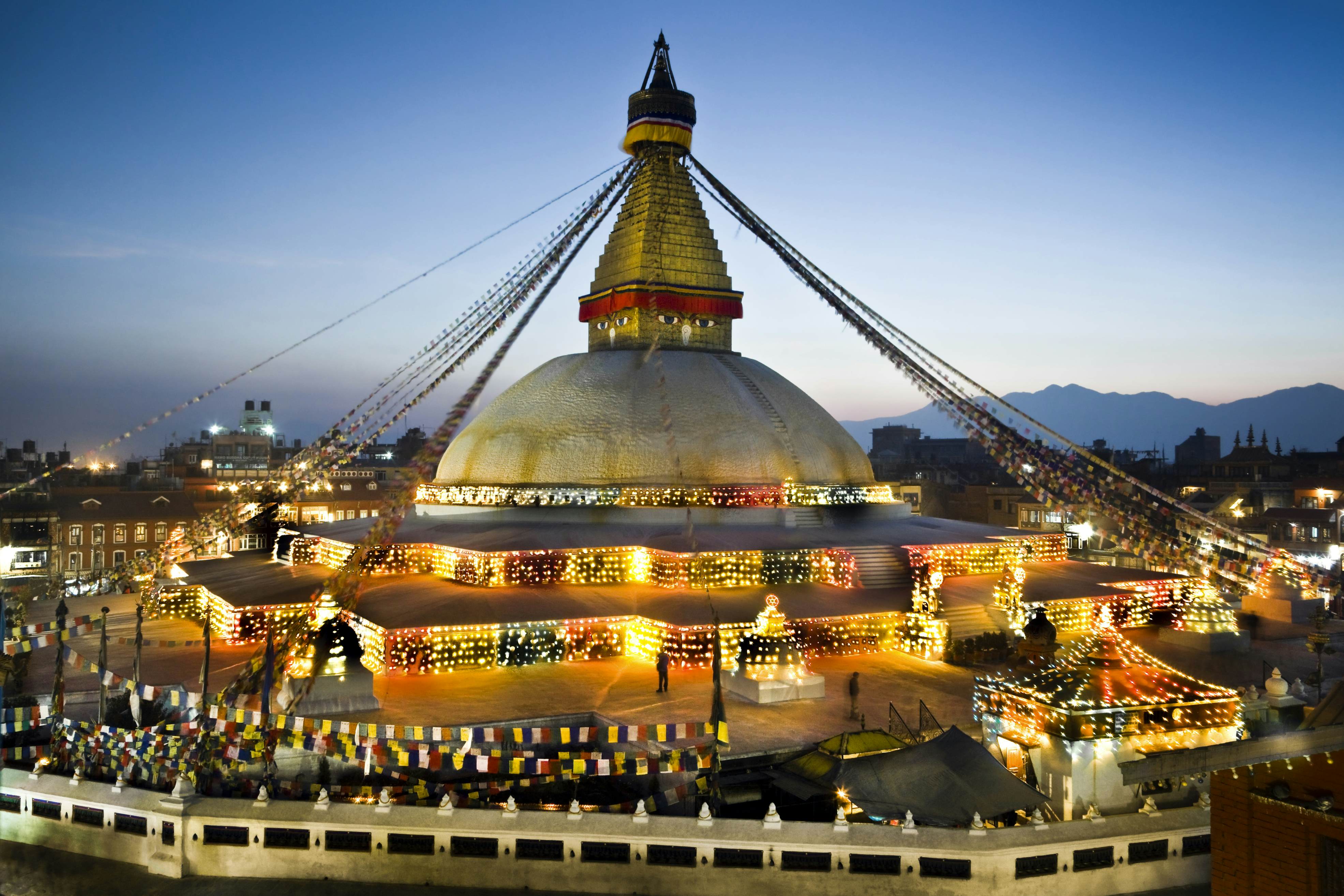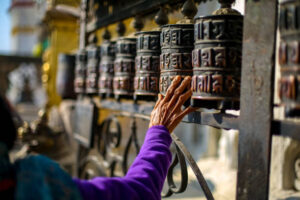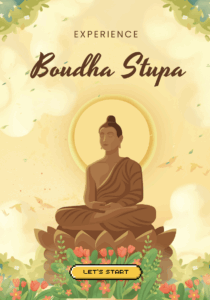For my final project, I went through a long process of brainstorming, sketching ideas, drawing diagrams, and listing out possible interactions. After exploring several concepts, I decided to continue developing my theme of “Experience Nepal.” I wanted to design something meaningful something that carries a piece of home with me and ultimately chose to focus on a single, iconic scene: the prayer wheels found around the stupas of Nepal.

When I talked to some of my Buddhist friends from countries like Sri Lanka, they told me that prayer wheels outside stupas are not common in their culture at all. That surprised me, because growing up even though I belong to a different religion. I often visited stupas just because I loved spinning the prayer wheels. As a kid, it was simply fun to go around the stupa and rotate each one. But as I got older, I began to understand the deeper spiritual meaning behind them.
Cultural Significance of the Prayer Wheel
Prayer wheels (known as “Mani wheels”) are an important part of Tibetan and Himalayan Buddhist practice. Each wheel is filled with rolls of mantras, most commonly “Om Mani Padme Hum.” According to tradition, spinning a prayer wheel is equivalent to chanting the mantra itself each rotation is believed to spread compassion, purify negative karma, and bring blessings to all beings. The clockwise motion follows the direction in which the sacred texts inside the wheel are written, symbolizing harmony and the continuous cycle of prayer. That understanding made the act of spinning them feel intentional and peaceful, and it became something I always looked forward to whenever I visited a stupa.
Because of that emotional and cultural connection, I decided to recreate this experience through my final project a small, interactive piece that can bring a little bit of Nepal into the classroom.
What I Have Completed So Far
1. Motor-as-Sensor Mechanism
In class, we learned how to power motors, but for this project I am using a motor as a dynamo meaning the motor becomes an input device instead of an output.
When someone spins the prayer wheel, the motor also spins. This produces a small voltage. The Arduino reads that voltage and interprets it as “the wheel is spinning.”
When motion is detected, the Arduino sends a signal to my P5.js sketch.
Once P5 receives the signal, it plays an “Om” sound (or a short chant) to represent the spiritual energy released through the turning of the wheel. The goal is to make the digital output feel connected to the physical ritual.
2. 2D Stupa Visualization
I am also working on a simple 2D illustration of a stupa specifically inspired by the Boudhanath Stupa, one of the largest sacred Tibetan Buddhist stupa in Kathmandu, Nepal, recognized as a UNESCO World Heritage Site.

In the final version:
Different parts of the stupa will light up when interacted with.
Each highlighted part will display or trigger information about its symbolic meaning.
For example:
The eyes of the Buddha represent wisdom and awareness.
The pinnacle represents enlightenment.
The dome symbolizes the world.
The prayer flags/wheels spread blessings through the wind or motion.
This visualization will help viewers learn the cultural and spiritual context behind what they are interacting with.



